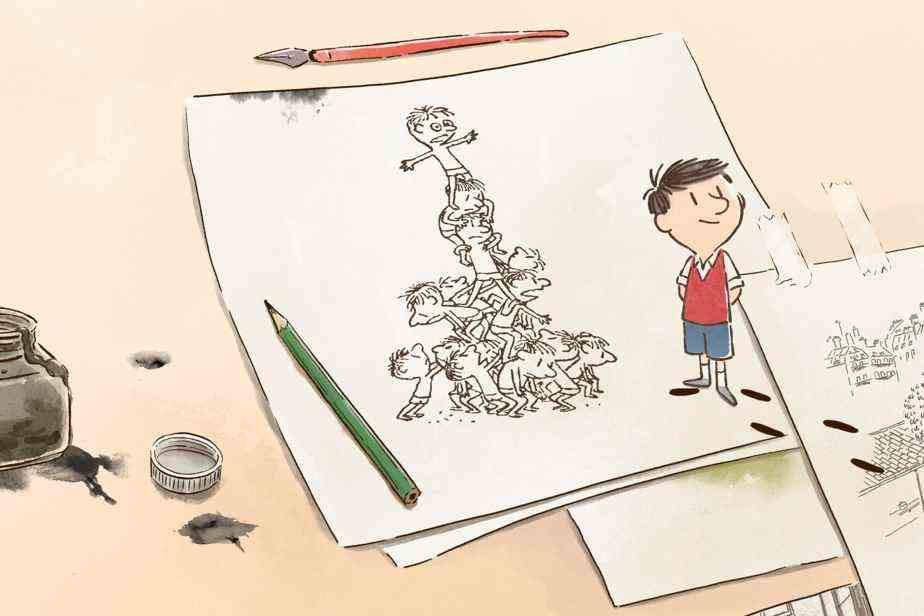What is the strength of this film? It’s the brilliant idea of alternating between the biographical account and the adventures of Little Nicolas. The screenplay, written by Anne Goscinny and Michel Fessler, mixes reality and fiction.
As the story progresses, little Nicolas slips into his creators’ studio, Goscinny’s typewriter or even Sempé’s white sheet, and asks them questions, but at the same time he will experience other stories, with his parents and his friends, who are always up for mischief!
On the side of the biographical account, we discover in particular that Sempé, who comes from Bordeaux, had a difficult childhood, marked by a violent stepfather. He then decides to try his luck in Paris. While Goscinny, during the rise of anti-Semitism in Europe, went into exile in Argentina with her parents, then returned to France.
It was in the 1950s that Sempé and Goscinny, accomplices, created this funny and mischievous little boy. Little Nicolas lives adventures with his group of friends, Alceste, Rufus, Clotaire, and, even today, remains a timeless character who appeals to young and old alike. Le Petit Nicolas lives an idealized, joyful, carefree childhood, the one that the creators did not have, and that is what makes this film all the more moving.
The line of the cartoon is faithful to that of Sempé, which makes it a real marvel, produced by Amandine Fredon and Benjamin Massoubre. This film is sparkling, funny and touching.

Animation Film
Le Petit Nicolas: what are we waiting for to be happy?
Amandine Fredon and Benjamin Massoubre
With the voices of Alain Chabat, Laurent Lafitte and Simon Faliu
1:22 a.m.
Indoors
